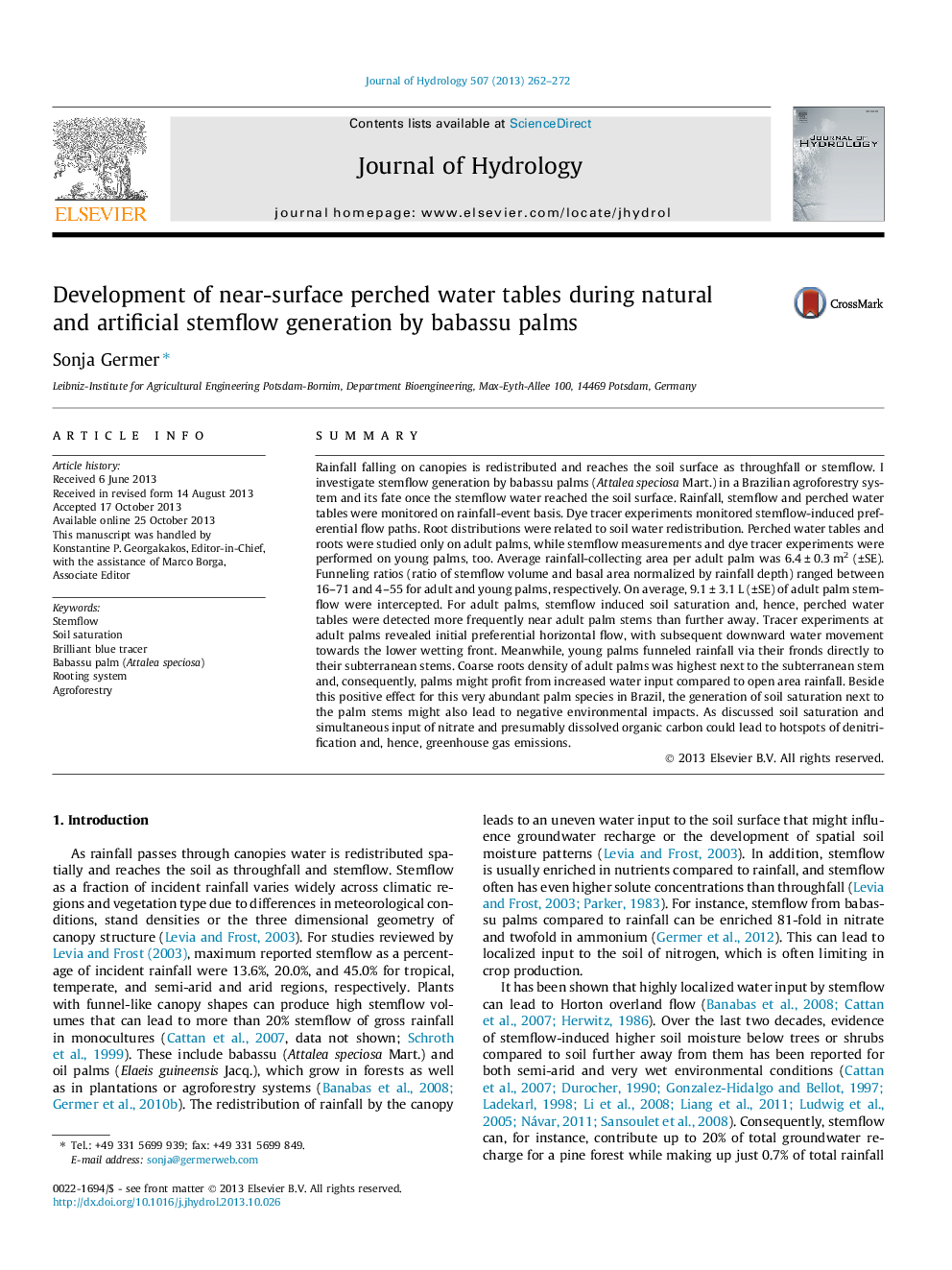| Article ID | Journal | Published Year | Pages | File Type |
|---|---|---|---|---|
| 4576137 | Journal of Hydrology | 2013 | 11 Pages |
•High stemflow fluxes can lead to saturated soil conditions next to adult babassu palms.•Once perched water bodies established downward water movement dominated.•Young palms funneled rainfall via their fronds directly to their subterranean stems.
SummaryRainfall falling on canopies is redistributed and reaches the soil surface as throughfall or stemflow. I investigate stemflow generation by babassu palms (Attalea speciosa Mart.) in a Brazilian agroforestry system and its fate once the stemflow water reached the soil surface. Rainfall, stemflow and perched water tables were monitored on rainfall-event basis. Dye tracer experiments monitored stemflow-induced preferential flow paths. Root distributions were related to soil water redistribution. Perched water tables and roots were studied only on adult palms, while stemflow measurements and dye tracer experiments were performed on young palms, too. Average rainfall-collecting area per adult palm was 6.4 ± 0.3 m2 (±SE). Funneling ratios (ratio of stemflow volume and basal area normalized by rainfall depth) ranged between 16–71 and 4–55 for adult and young palms, respectively. On average, 9.1 ± 3.1 L (±SE) of adult palm stemflow were intercepted. For adult palms, stemflow induced soil saturation and, hence, perched water tables were detected more frequently near adult palm stems than further away. Tracer experiments at adult palms revealed initial preferential horizontal flow, with subsequent downward water movement towards the lower wetting front. Meanwhile, young palms funneled rainfall via their fronds directly to their subterranean stems. Coarse roots density of adult palms was highest next to the subterranean stem and, consequently, palms might profit from increased water input compared to open area rainfall. Beside this positive effect for this very abundant palm species in Brazil, the generation of soil saturation next to the palm stems might also lead to negative environmental impacts. As discussed soil saturation and simultaneous input of nitrate and presumably dissolved organic carbon could lead to hotspots of denitrification and, hence, greenhouse gas emissions.
Graphical abstractFigure optionsDownload full-size imageDownload as PowerPoint slide
